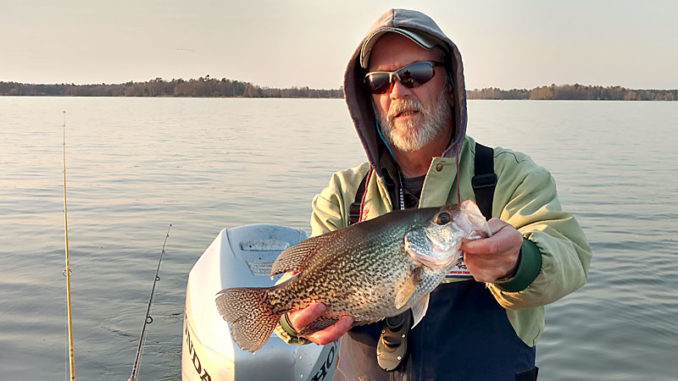
Kerr Lake crappie move to mouth of creeks to prepare for spawn
February may feel like just another cold month to some anglers. But crappie fishermen know that the subtle changes occurring are stacking the deck in their favor. Kerr Lake crappie will begin to mill around the mouths of creeks that are home to their favorite spawning grounds. And guide Eddie Moody of Roxboro, N.C., will have his rigs ready to take full advantage.
“In February, the water temperature is going to be around 45 degrees, maybe up to 50 on a sunny streak,” said Moody (984-363-5256), who owns Slab’s Guide Service. “And the crappie will start moving into the mouths of the creeks. A good indicator is when you see the shad moving. The crappie’s instincts tell them that the spawn is coming, but they’re also following their grocery store.”
According to Moody, the best average depth to target crappie in February will be 12 to 16 feet. He said that the earlier portion will likely see some fish as deep as 20 feet. The latter is subject to see some shallower fish in 7 feet and potentially on the spawning flats if a warming trend persists. Crappie will approach the spawning ground in waves, with the largest fish leading the way. Any temperatures close to 55 or 58 are fair game for the first spawners, he said.
Tigh-lining is a good tactic
Areas of interest inside the creek mouths will include the edges of the creek channel itself, along with nearby points that provide a structural relief. Rocks, stumps and any type of wooden cover on these areas such as brush piles are a boon. Moody said that the upper end of the lake — where the water is shallower overall — will fire off first. Creeks, including Buffalo and Bluestone, as well as the headwaters where the Staunton, Dan and Roanoke rivers converge will be hot.
“Generally, tight-lining will dominate, because the fish will be moving slow, and you can dangle a bait in front of their face,” Moody said. “Most (anglers) will run a spread of 8 to 10 rods off the bow at a speed of a ½-mile an hour down to a dead standstill. Each rod will have a ¼-ounce weight, 12 to 24 inches of leader and a 1/32- to a 1/64-ounce jighead tipped with a minnow. I’ll use 8-pound monofilament mainline and 6-pound leader. Soft-plastic colors range from black and blue, chartreuse, chartreuse and pink, to red for high pressure days. I like the Bobby Garland baits. The Baby Shad style is a good one for tight-lining.”


Be the first to comment